Abstract
A local anesthetic-impregnated mucosal adhesive patch (DentiPatch) was compared with topical anesthetic (Hurricaine Dry Handle Swab) for gingival anesthesia before rubber dam clamp placement in children. Twenty-eight children needing sealants on their posterior teeth were enrolled in this study. Topical anesthesia was provided using either the mucoadhesive patch (20% lidocaine) or topical anesthetic (20% benzocaine). Subjects were randomized using a split mouth model. Either the patch or topical anesthetic was applied to the gingiva for 5 minutes or 1 minute, respectively. Subjects used a visual analog scale to describe their pain during the procedure. Linear regression and mixed linear models were used for data analysis. The visual analog scale results (pain scores) showed no significant difference between treatments. The mean per-child patch-sticking fraction was 29.7%. Patch adherence to oral mucosa increased with age in girls (P = .0045), but not in boys. The DentiPatch is as effective as, although not superior to, the Hurricaine Dry Handle Swab for gingival anesthesia before rubber dam clamp placement in children. These study results would not support the use of the DentiPatch for gingival anesthesia in children because of poor adherence to oral mucosa and the extra time necessary to apply and retain the device.
Full text
PDF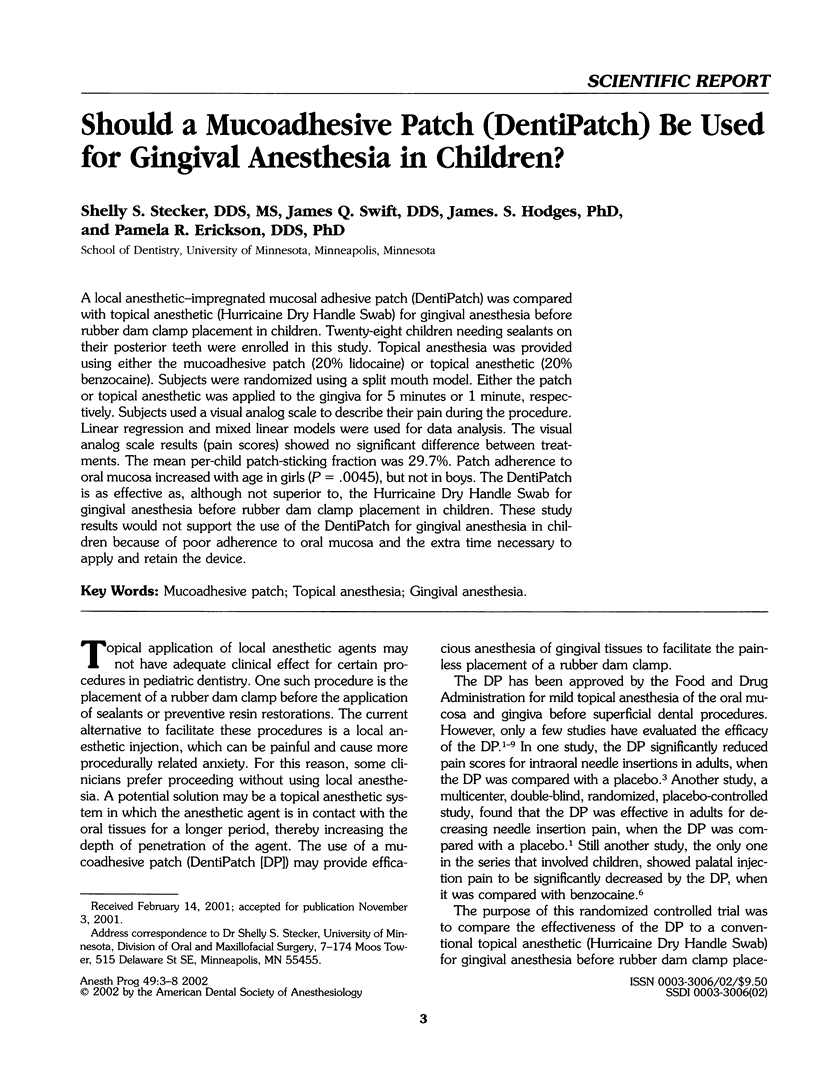
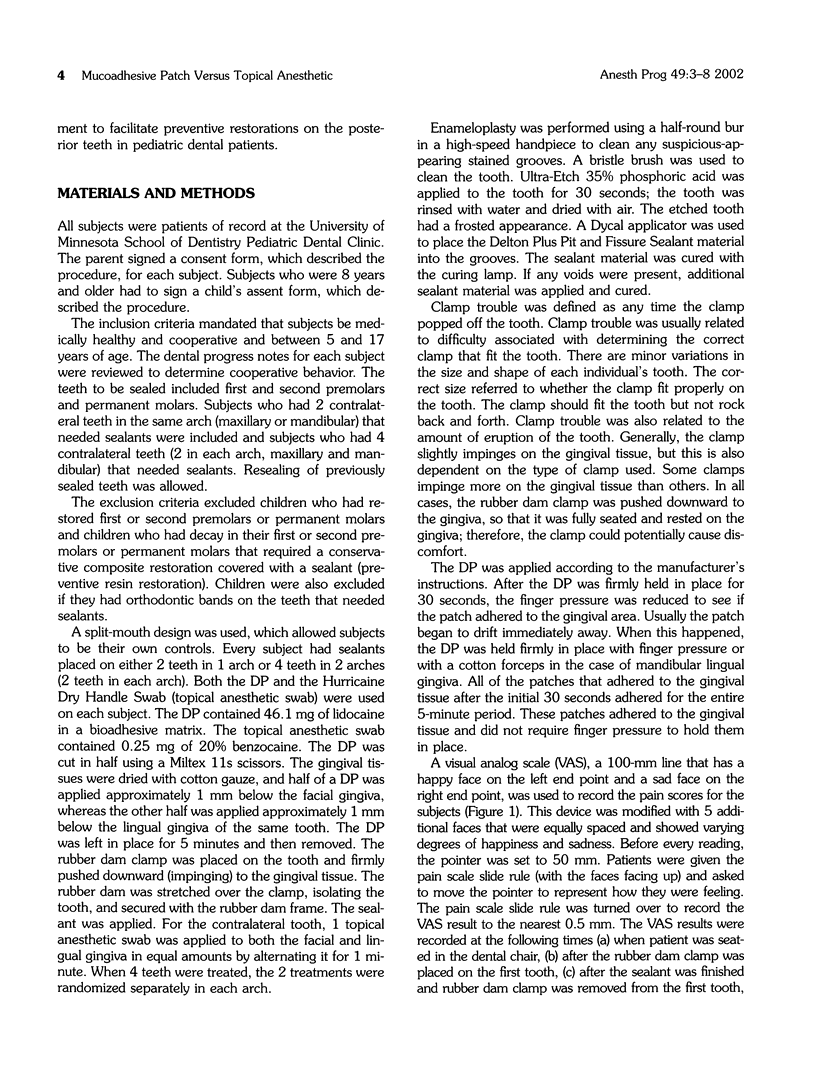
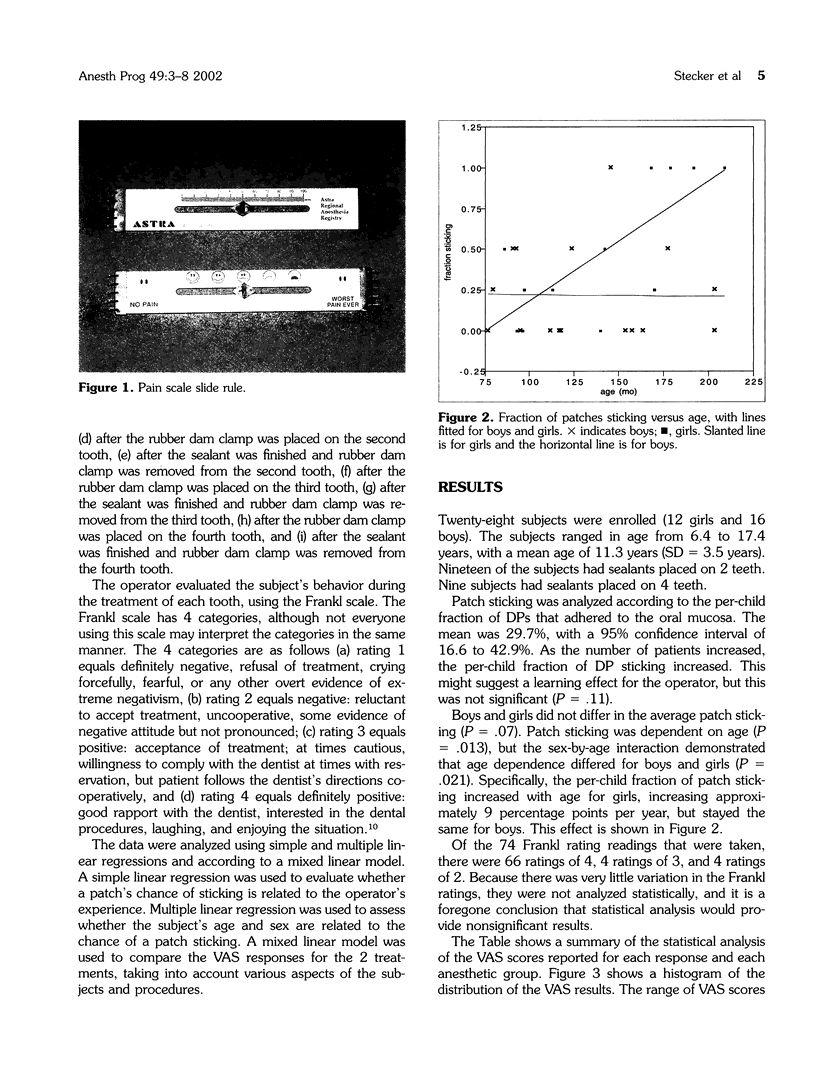
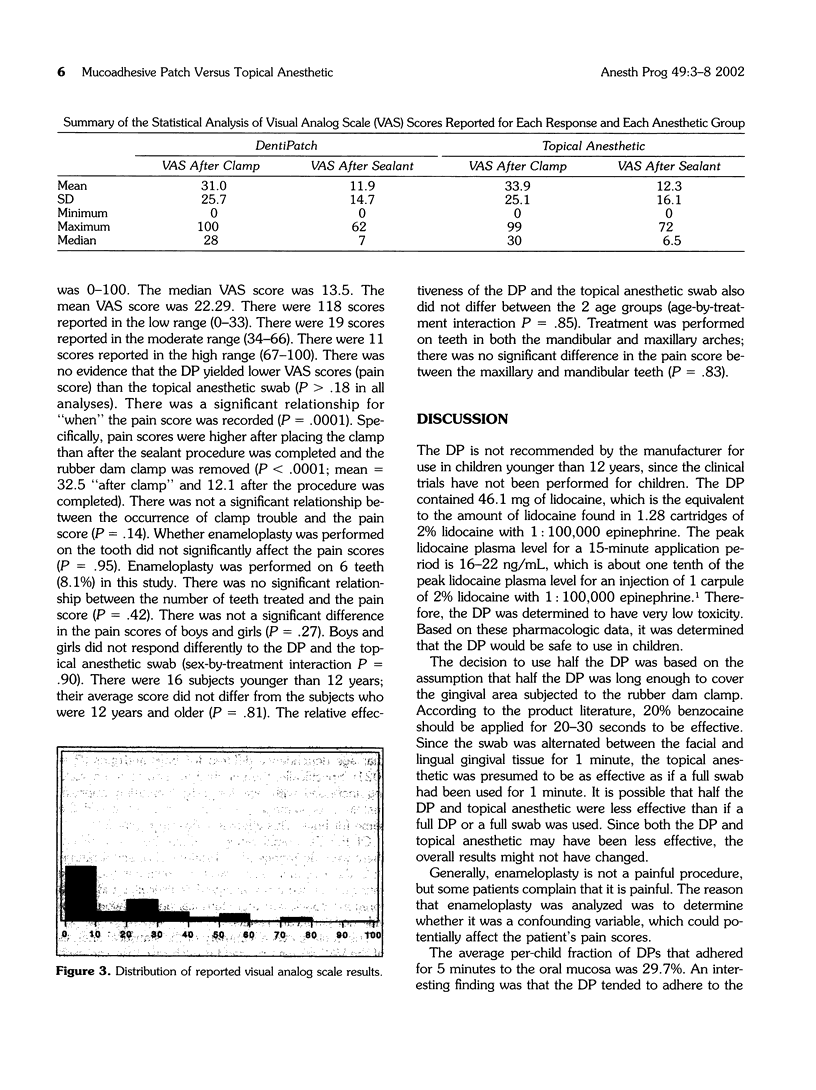
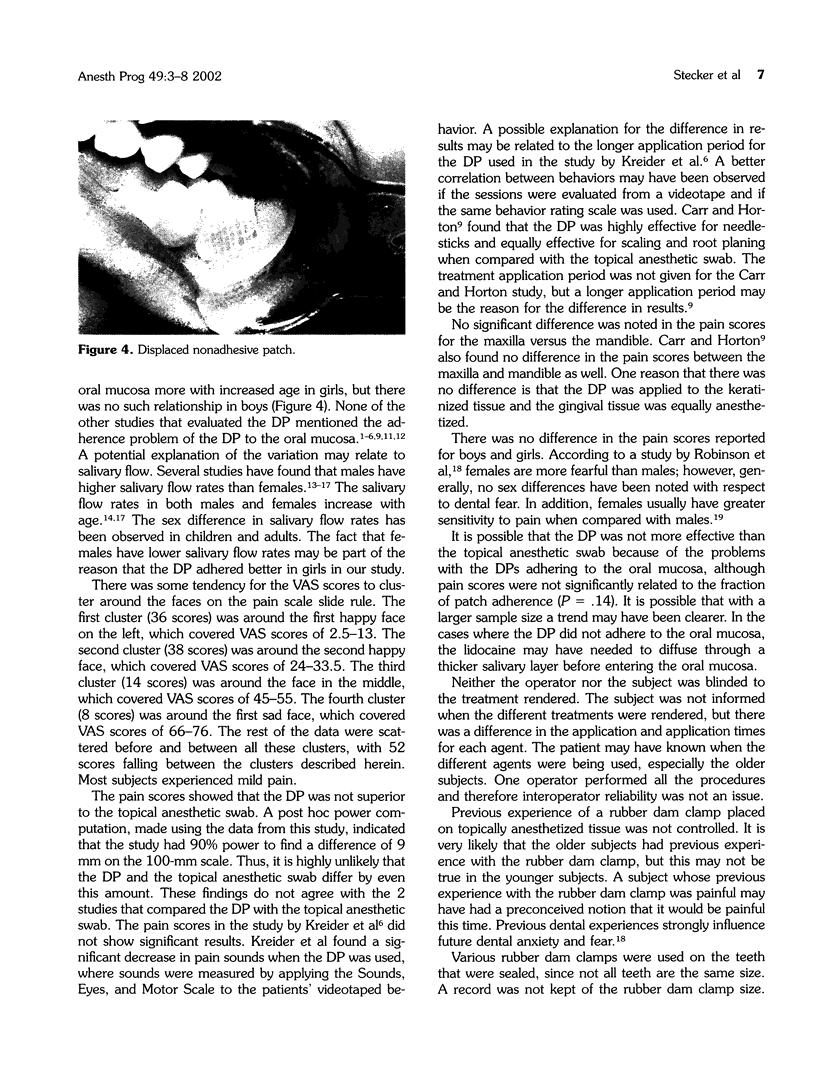
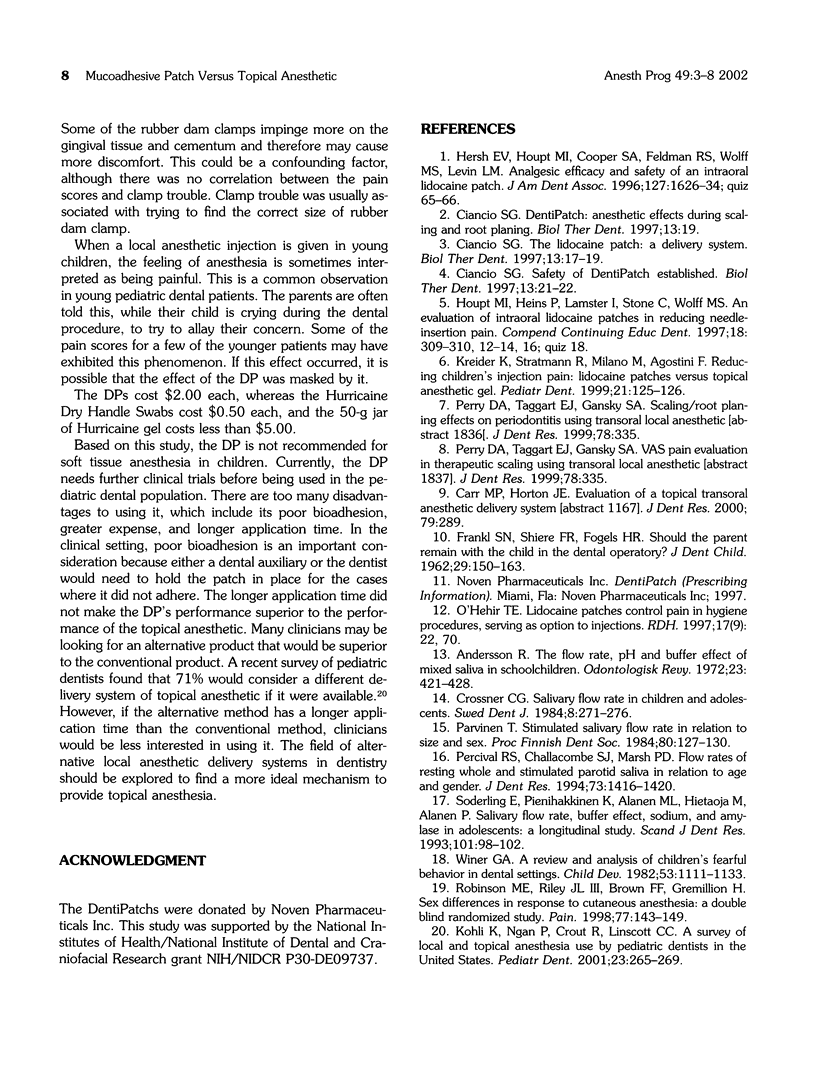
Images in this article
Selected References
These references are in PubMed. This may not be the complete list of references from this article.
- Andersson R. The flow rate, pH and buffer effect of mixed saliva in schoolchildren. Odontol Revy. 1972;23(4):421–428. [PubMed] [Google Scholar]
- Crossner C. G. Salivary flow rate in children and adolescents. Swed Dent J. 1984;8(6):271–276. [PubMed] [Google Scholar]
- Goho C. Pulse oximetry evaluation of vitality in primary and immature permanent teeth. Pediatr Dent. 1999 Mar-Apr;21(2):125–127. [PubMed] [Google Scholar]
- Hersh E. V., Houpt M. I., Cooper S. A., Feldman R. S., Wolff M. S., Levin L. M. Analgesic efficacy and safety of an intraoral lidocaine patch. J Am Dent Assoc. 1996 Nov;127(11):1626–1666. doi: 10.14219/jada.archive.1996.0098. [DOI] [PubMed] [Google Scholar]
- Houpt M. I., Heins P., Lamster I., Stone C., Wolff M. S. An evaluation of intraoral lidocaine patches in reducing needle-insertion pain. Compend Contin Educ Dent. 1997 Apr;18(4):309-1O, 312-4, 316; quiz 318. [PubMed] [Google Scholar]
- Kohli K., Ngan P., Crout R., Linscott C. C. A survey of local and topical anesthesia use by pediatric dentists in the United States. Pediatr Dent. 2001 May-Jun;23(3):265–269. [PubMed] [Google Scholar]
- Parvinen T. Stimulated salivary flow rate in relation to size and sex. Proc Finn Dent Soc. 1984;80(3):127–130. [PubMed] [Google Scholar]
- Percival R. S., Challacombe S. J., Marsh P. D. Flow rates of resting whole and stimulated parotid saliva in relation to age and gender. J Dent Res. 1994 Aug;73(8):1416–1420. doi: 10.1177/00220345940730080401. [DOI] [PubMed] [Google Scholar]
- Robinson M. E., Riley J. L., 3rd, Brown F. F., Gremillion H. Sex differences in response to cutaneous anesthesia: a double blind randomized study. Pain. 1998 Aug;77(2):143–149. doi: 10.1016/S0304-3959(98)00088-8. [DOI] [PubMed] [Google Scholar]
- Söderling E., Pienihäkkinen K., Alanen M. L., Hietaoja M., Alanen P. Salivary flow rate, buffer effect, sodium, and amylase in adolescents: a longitudinal study. Scand J Dent Res. 1993 Apr;101(2):98–102. doi: 10.1111/j.1600-0722.1993.tb01096.x. [DOI] [PubMed] [Google Scholar]
- Winer G. A. A review and analysis of children's fearful behavior in dental settings. Child Dev. 1982 Oct;53(5):1111–1133. [PubMed] [Google Scholar]




